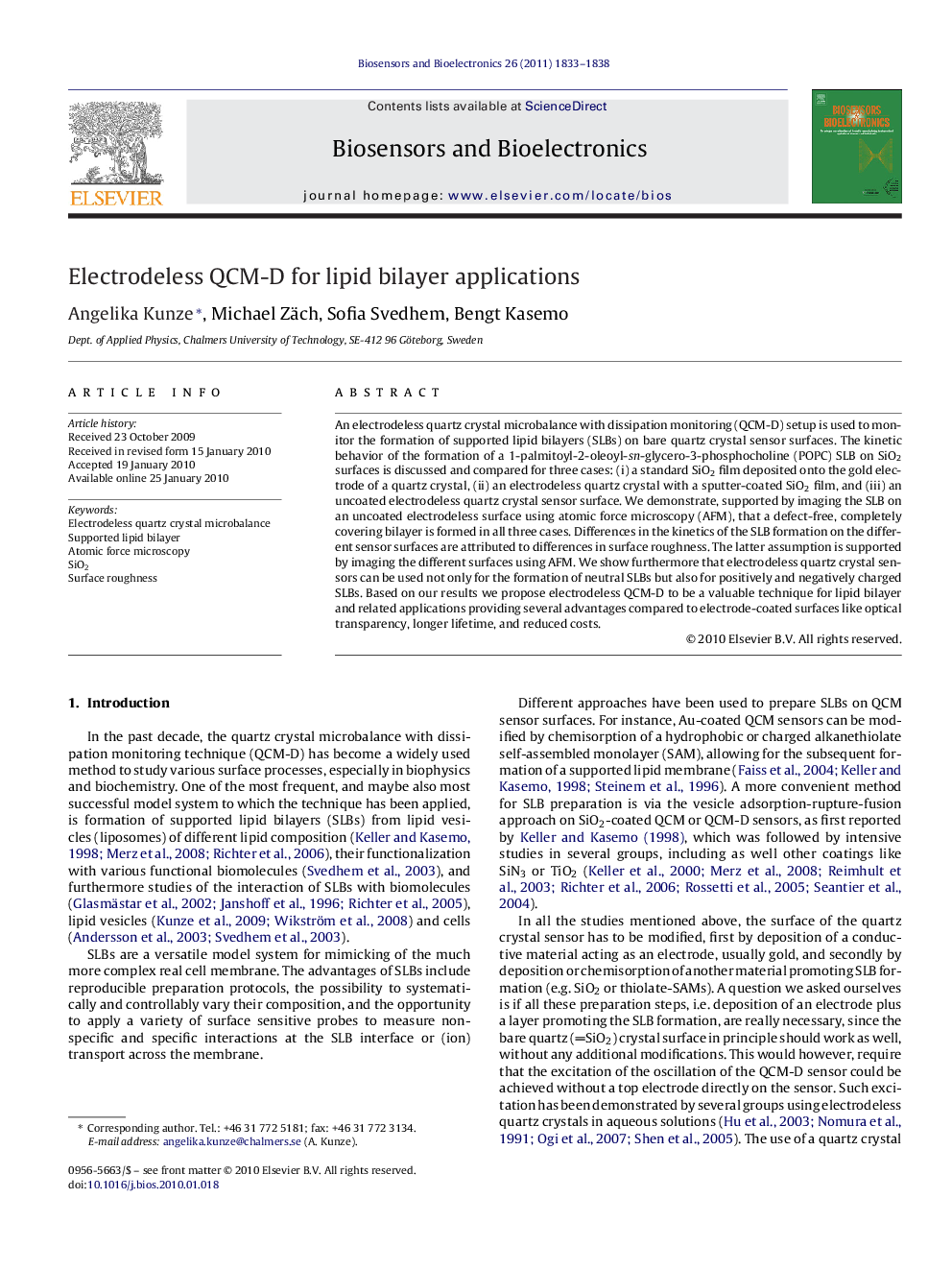| Article ID | Journal | Published Year | Pages | File Type |
|---|---|---|---|---|
| 868120 | Biosensors and Bioelectronics | 2011 | 6 Pages |
An electrodeless quartz crystal microbalance with dissipation monitoring (QCM-D) setup is used to monitor the formation of supported lipid bilayers (SLBs) on bare quartz crystal sensor surfaces. The kinetic behavior of the formation of a 1-palmitoyl-2-oleoyl-sn-glycero-3-phosphocholine (POPC) SLB on SiO2 surfaces is discussed and compared for three cases: (i) a standard SiO2 film deposited onto the gold electrode of a quartz crystal, (ii) an electrodeless quartz crystal with a sputter-coated SiO2 film, and (iii) an uncoated electrodeless quartz crystal sensor surface. We demonstrate, supported by imaging the SLB on an uncoated electrodeless surface using atomic force microscopy (AFM), that a defect-free, completely covering bilayer is formed in all three cases. Differences in the kinetics of the SLB formation on the different sensor surfaces are attributed to differences in surface roughness. The latter assumption is supported by imaging the different surfaces using AFM. We show furthermore that electrodeless quartz crystal sensors can be used not only for the formation of neutral SLBs but also for positively and negatively charged SLBs. Based on our results we propose electrodeless QCM-D to be a valuable technique for lipid bilayer and related applications providing several advantages compared to electrode-coated surfaces like optical transparency, longer lifetime, and reduced costs.
